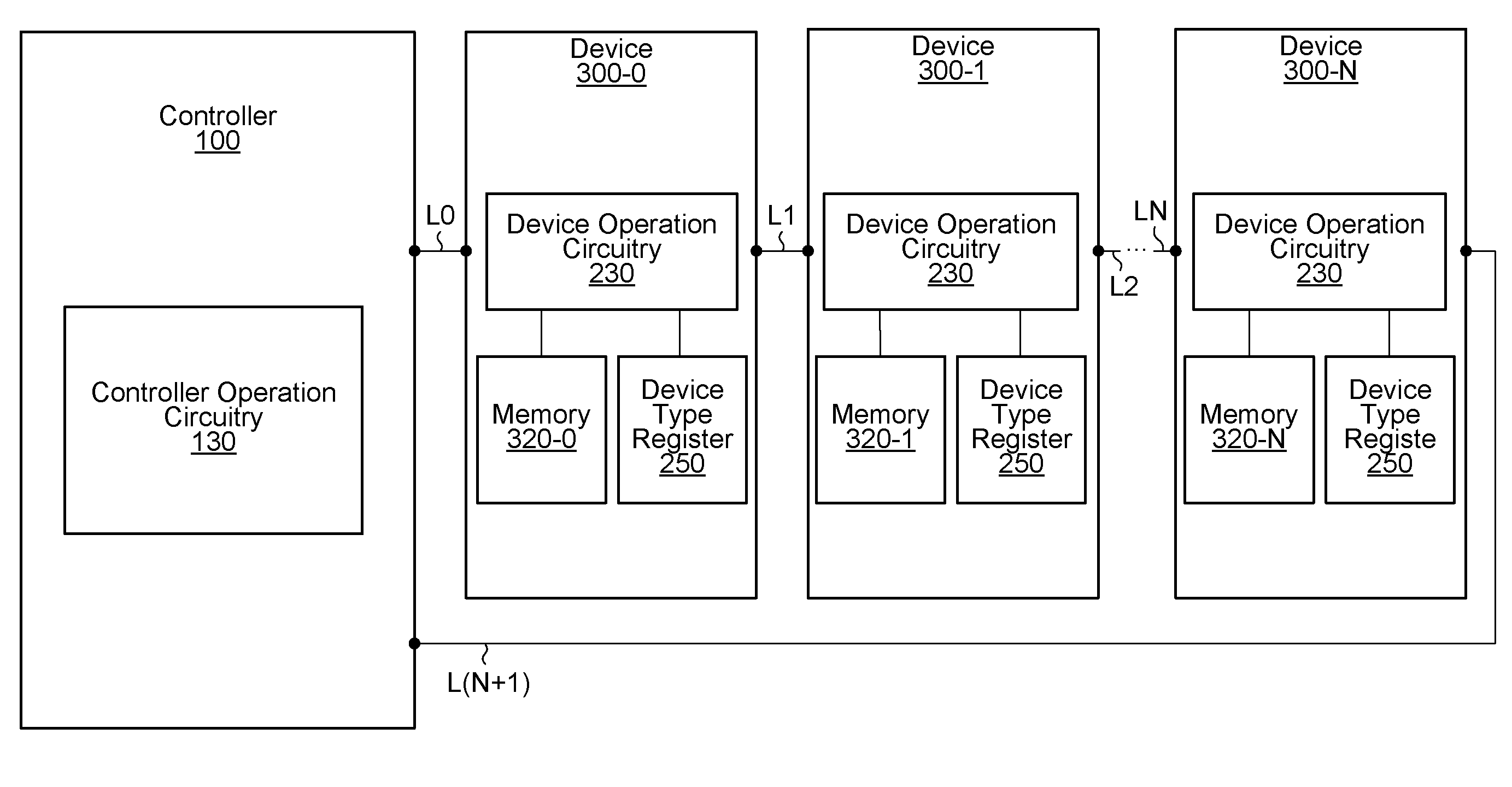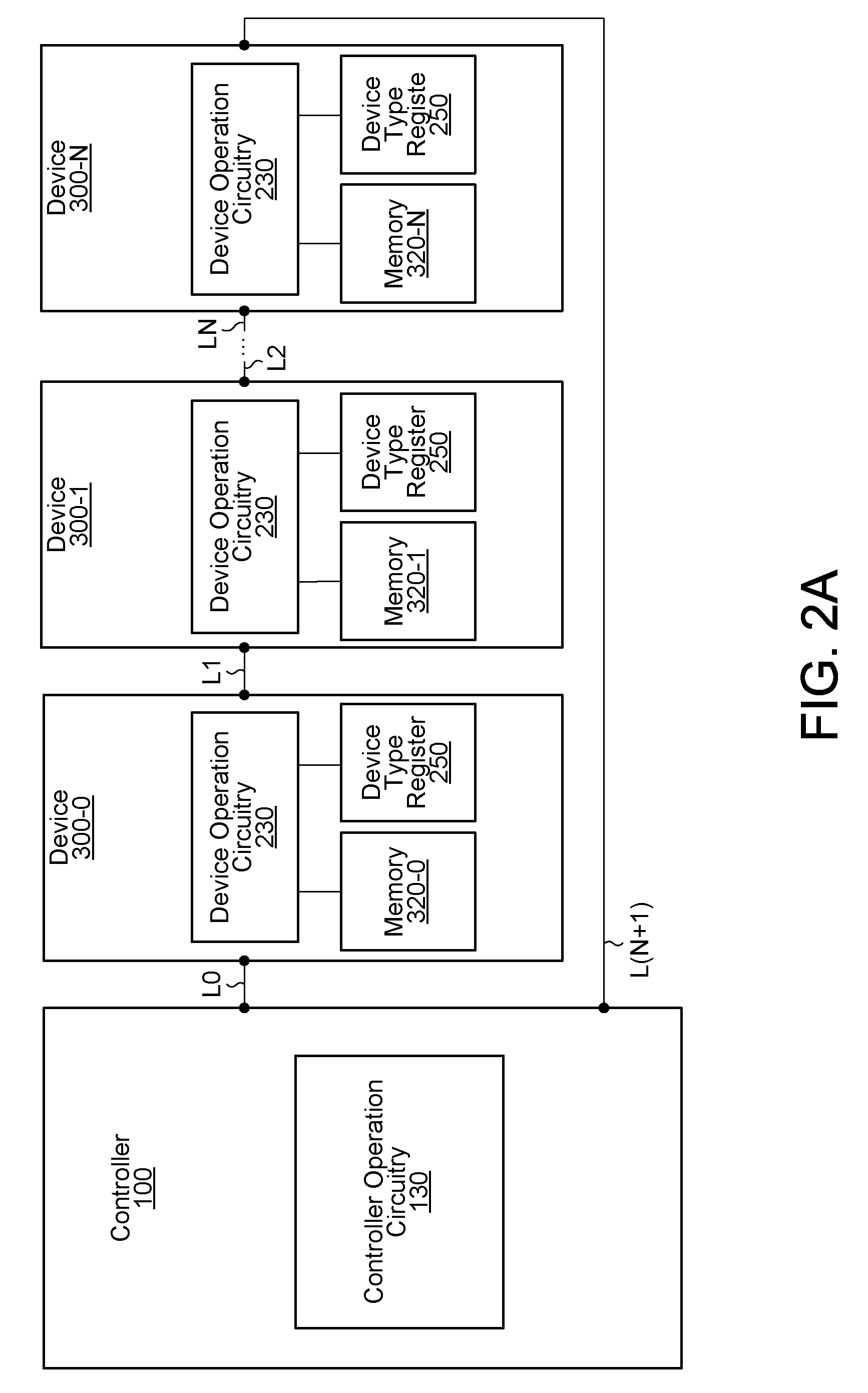Address assignment and type recognition of serially interconnected memory devices of mixed type
a memory device and serial interconnection technology, applied in the field of semiconductor device systems, can solve the problems of signal skew and cross talk, large high cost, and achieve the effect of reducing the number of undesired effects, and reducing the number of unsuitable effects
- Summary
- Abstract
- Description
- Claims
- Application Information
AI Technical Summary
Benefits of technology
Problems solved by technology
Method used
Image
Examples
example details
[0134 will now be provided in the context of the examples presented above with reference to FIGS. 3A-3F. These details relate to implementations with type-independent addressing. In these implementations, the memory type does not play a role for addressing purposes. It is to be understood that these details provided in this section are very specific for example purposes only. There are many ways to implement the initialization phase 35 shown in FIG. 2C. A process for assigning the device addresses with type-independent addressing is described below with reference to FIG. 7.
[0135]FIG. 7 shows a method of initializing a memory system with type-independent addressing. It is to be understood that this process is very specific for example purposes only. This particular example method is one application of the initialization phase 35 shown in FIG. 2C. The method includes the address assignment (part I) 35-1 and the device address read (part II) 35-2 as shown in FIG. 2D.
[0136]Referring to ...
PUM
 Login to View More
Login to View More Abstract
Description
Claims
Application Information
 Login to View More
Login to View More - R&D
- Intellectual Property
- Life Sciences
- Materials
- Tech Scout
- Unparalleled Data Quality
- Higher Quality Content
- 60% Fewer Hallucinations
Browse by: Latest US Patents, China's latest patents, Technical Efficacy Thesaurus, Application Domain, Technology Topic, Popular Technical Reports.
© 2025 PatSnap. All rights reserved.Legal|Privacy policy|Modern Slavery Act Transparency Statement|Sitemap|About US| Contact US: help@patsnap.com



